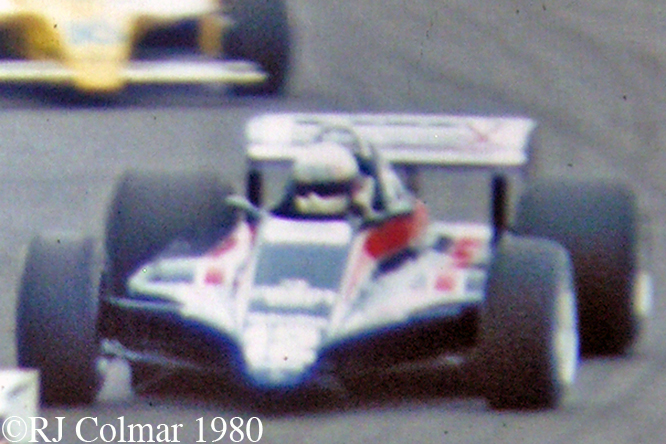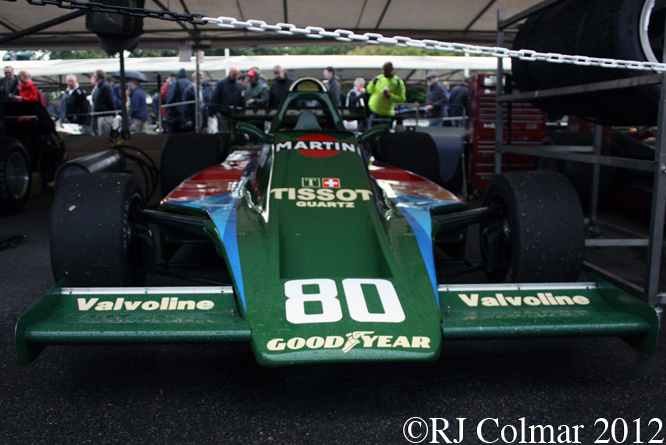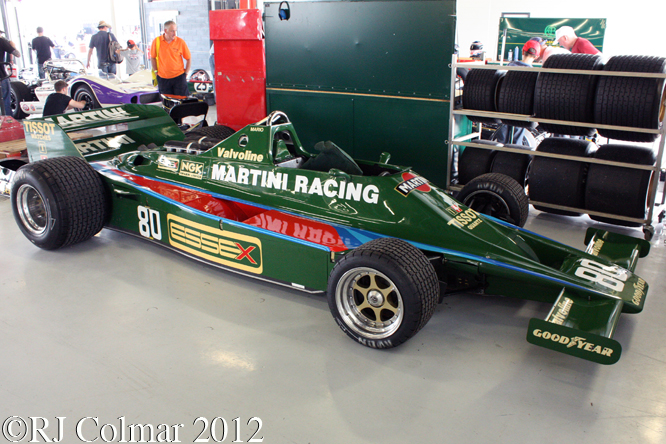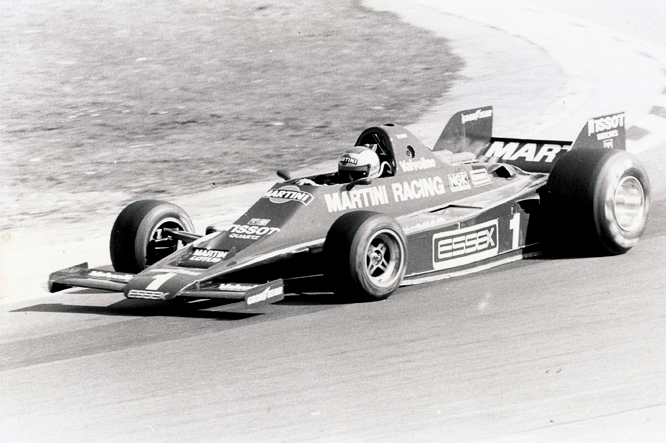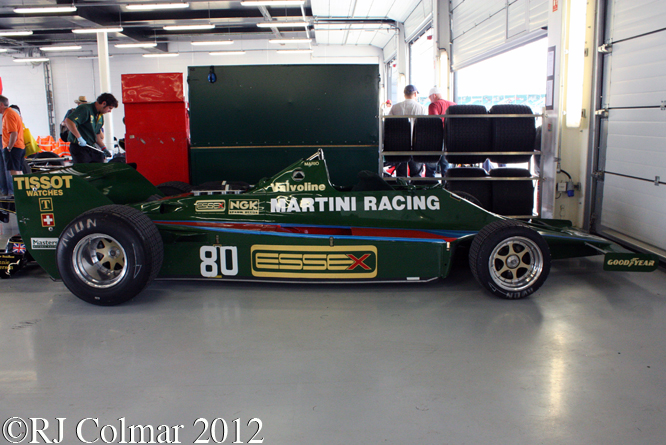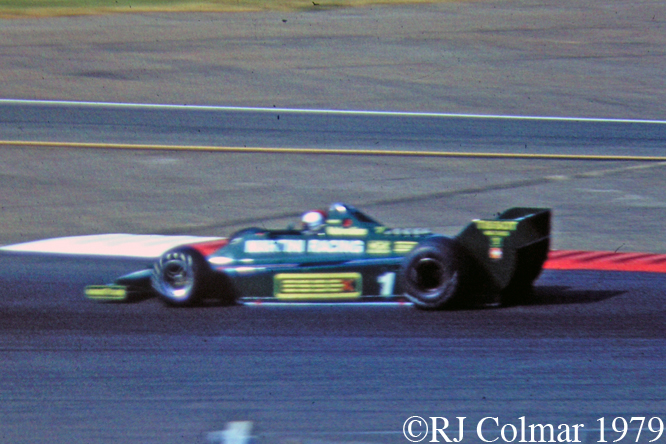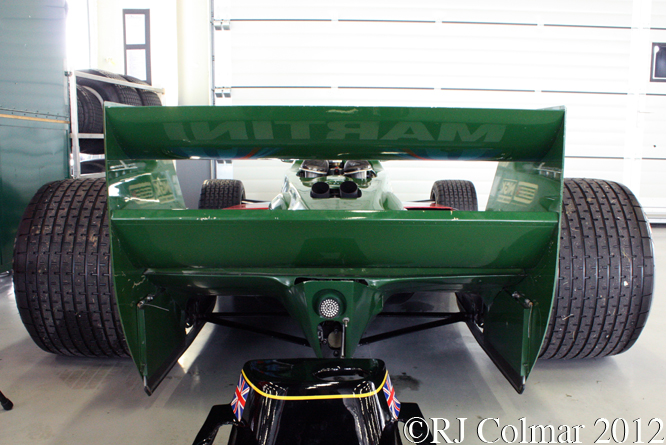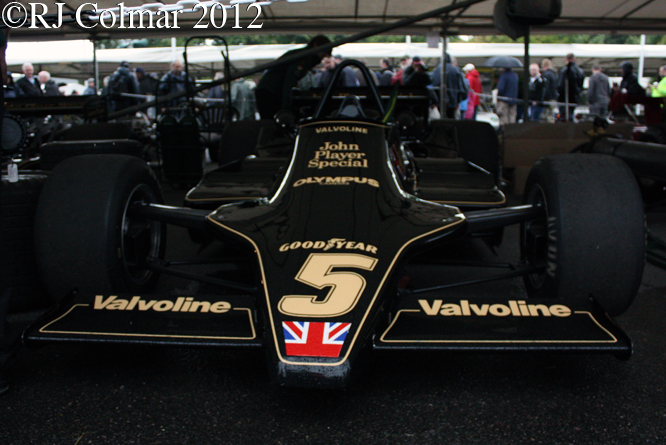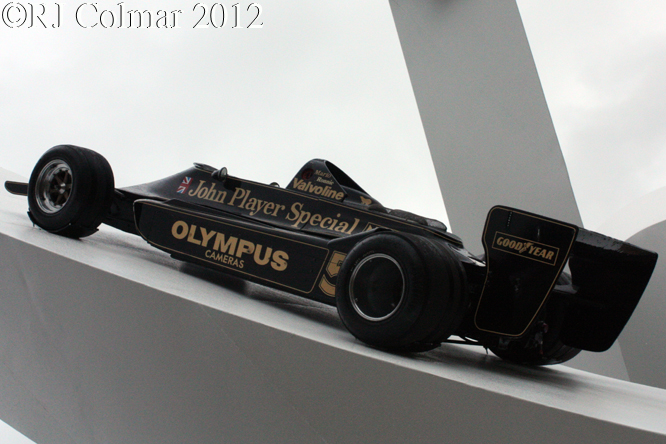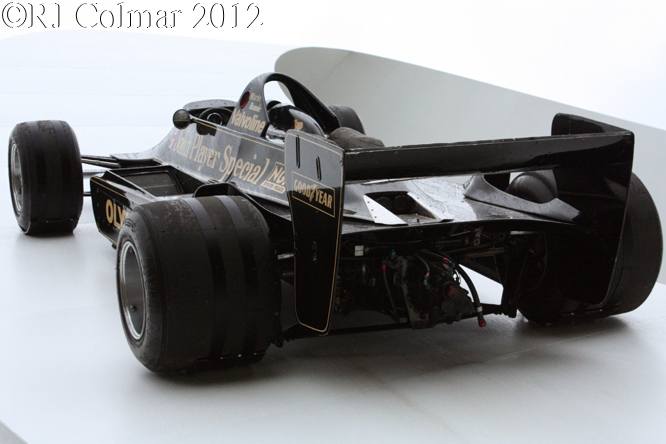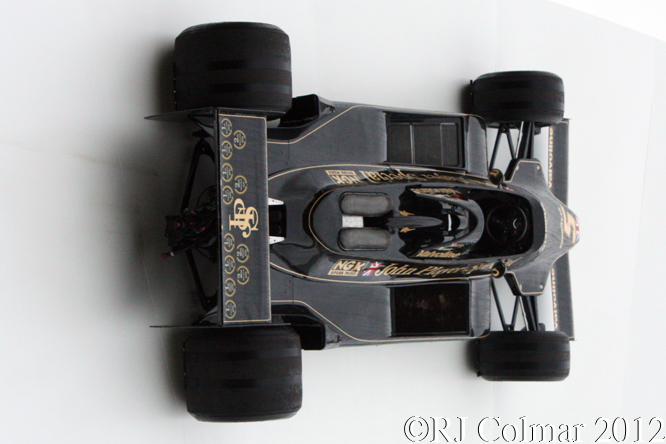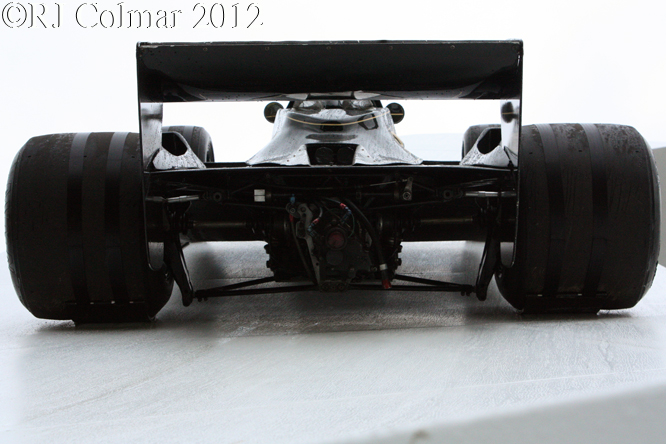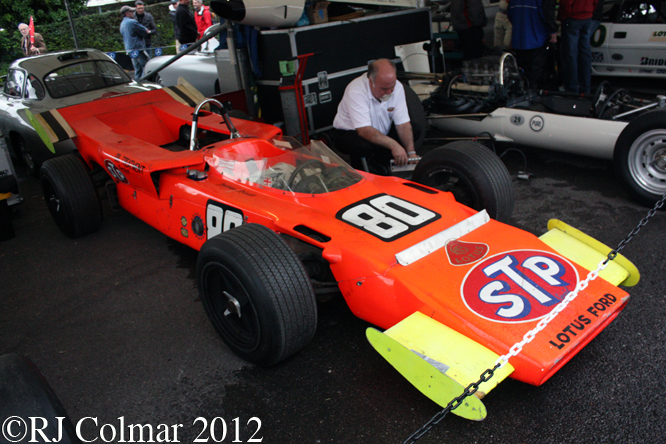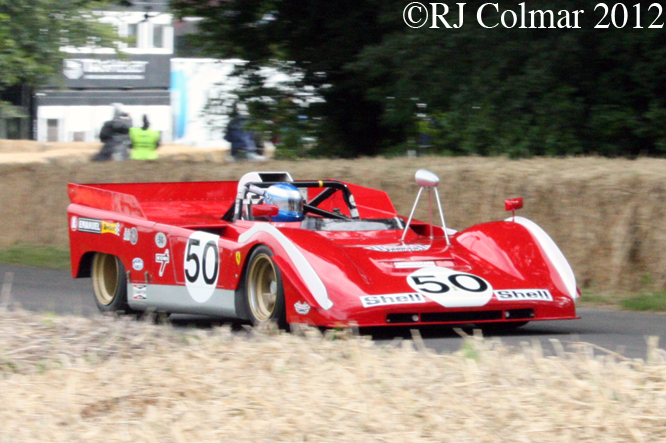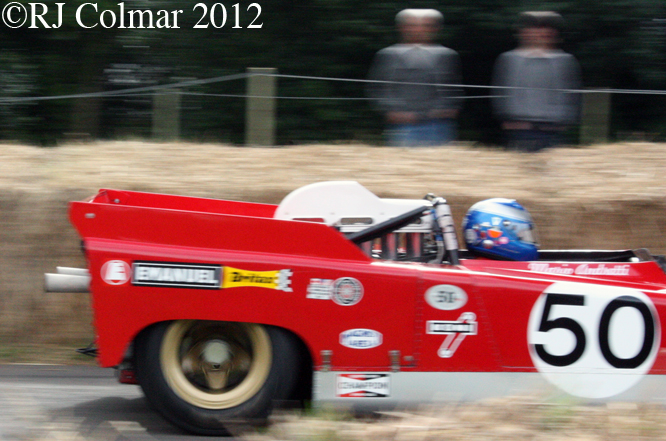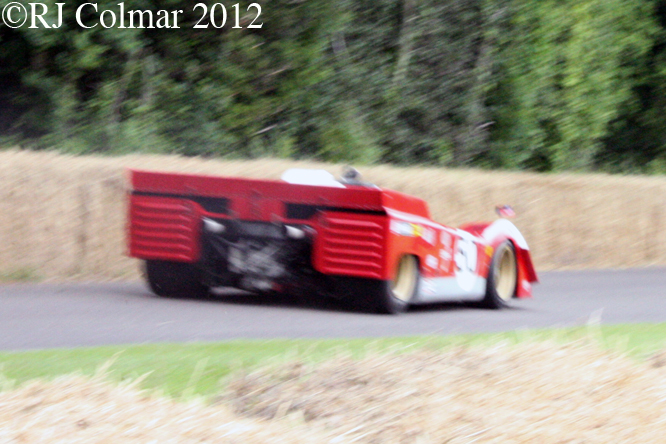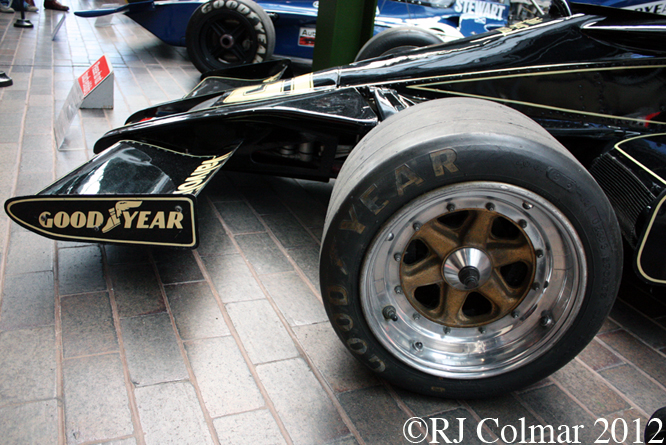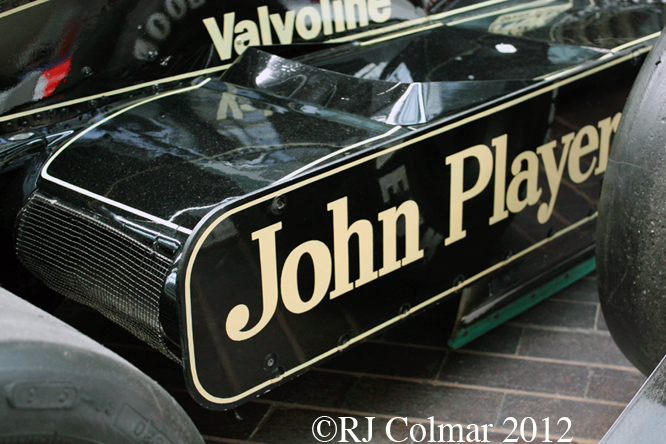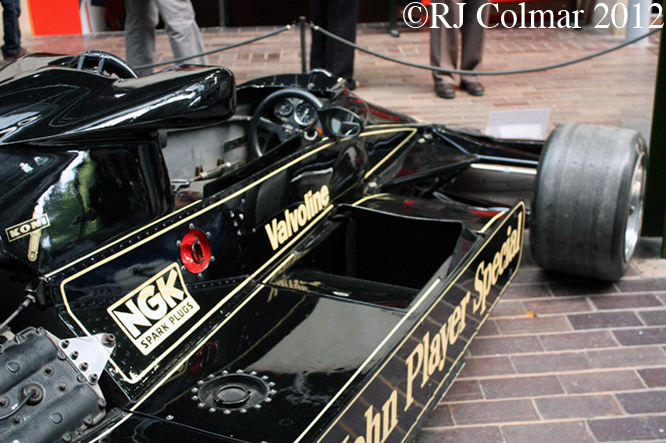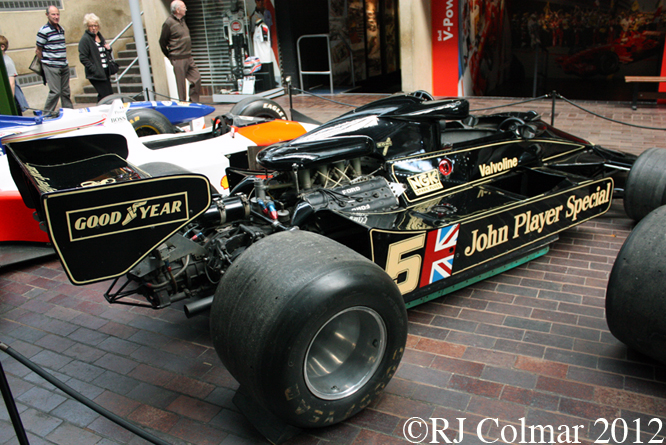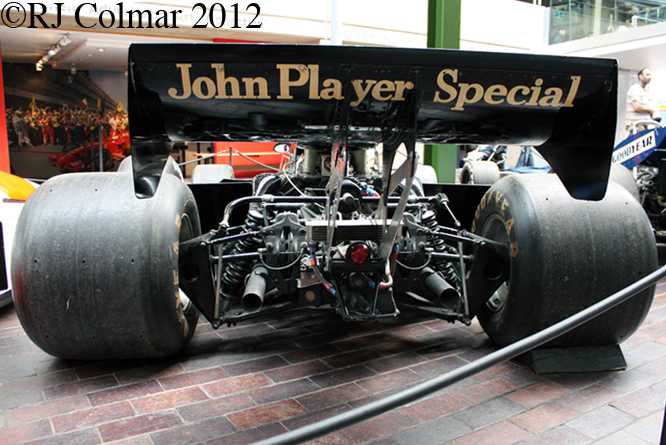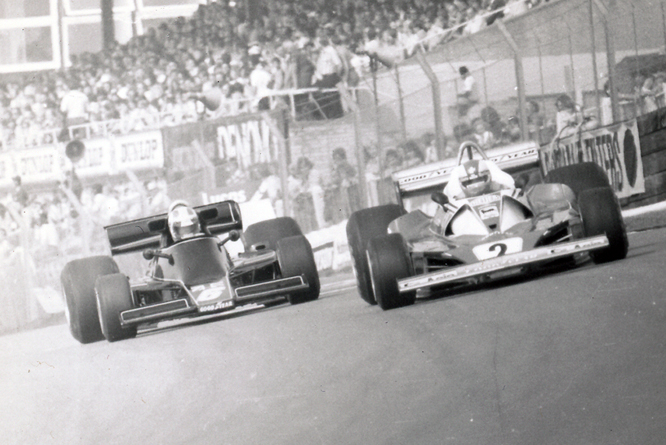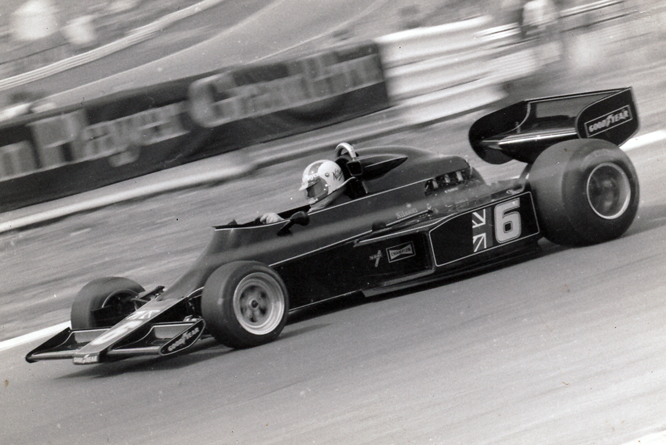Through out the 1970s Colin Chapman had come up with a string of innovative if not always successful designs and concepts for his Formula One team on the successful side there was the wedge shaped Lotus 72 which remained competitive from 1970 to 1974, the Lotus 78 wing car which won more races than any other design in 1977 but did not win the championship and the Lotus 79 ground effects car which clinched the 1978 World Championships for Mario Andretti and Lotus.
On the less successful side Colin had developed the Lotus 76 with it’s novel twin wing and push button clutch which was abandoned in 1974, Lotus 77 with it’s infinitely variable suspension geometry which caused team leader Ronnie Peterson to quit the team, before it was turned into a one time race winner with Mario Andretti at the wheel in 1976 and the Lotus 80 which took the ground effects concept a little too far and was abandoned after just three starts in 1979.
This left Lotus and Ferrari tied on championships for the 1970’s with three drivers titles each and four constructors titles each with Lotus winning 35 races between 1970 and 1979 to Ferrari’s 39.
1980 proved to be a bad year for both Ferrari and Lotus, Ferrari were busy building a new turbo charged motor and the Ferrari T5 used in the interim was an improvement on the previous years championship winning Ferrari T4, but was way behind the development curve of its competitors, Colin Champman’s Lotus 1981 mean while did not appear to feature any innovations and is probably best described as an improvement on the 1978 championship winning Lotus 79, but was also way behind the development curve of it’s competitors.
Mario Andretti and Elio de Angelis were employed to drive the new cars and it was de Angelis in his second season in the sports top tier that scored the teams best result a second place in the Brazilian Grand Prix along with three further top six, points paying finish. Mario meanwhile had a miserable last season at Lotus with nine retirements and just a single sixth place finish in his last race for the team in the US Grand Prix at Watkins Glen.
The Lotus 81 introduced future world champion Nigel Mansell to Formula One when he became a third member of the team for three races towards the end of the year starting at the 1980 Austrian Grand Prix. Nigel recorded two retirements and a DNQ but had done enough to secure a seat with the team for the following season.
Lotus finished the season in a poor and distant, by their standards 5th place in the constructors championship while Ferrari finished an even more disappointing 10th.
Elio de Angelis is seen above in chassis 81 #R2 on the opening lap of the 1980 British Grand Prix at Brands Hatch from which he retired. 81/R2 was used by all three Lotus drivers in 1980, Mario scored a best 7th place finish at Monaco, Elio a best 4th place finish at the 1980 US GP at Watkins Glen while Nigel failed to qualify R2 at the 1980 Italian GP at Monza.
For 1981 chassis 81/R2 was updated to B spec which included a tea tray front wing, as a has been in use by Ferrari since 1974. Nigel Mansell raced the car four times in 1981 scoring a best 10th place finish in the 1981 South African Grand Prix, the cars last race was the 1981 Argentinian Grand Prix from which Nigel retired. The car was subsequently taken to races as a spare car up until the French Grand Prix after which it was replaced by the new Lotus 87/88 design.
Thanks for joining me on this “Improvement Is Not Enough” edition of “Gettin’ a li’l psycho on tyres” I hope you will join me again tomorrow. Don’t forget to come back now !

